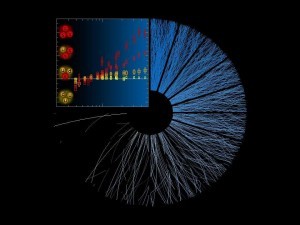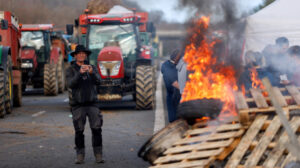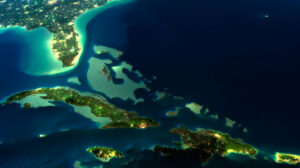Physicists at the Large Hadron Collider (LHC) have observed some unusual events in a very rare type of proton collision.
Collisions between protons don’t always create the same particles, and in a small number of cases, they can create a large number of uncommon bits of matter. That’s fertile ground to test theories, and physicists were looking for something unexpected. And they found exactly that.
The team working on the ALICE experiment noticed an increase in particles that have strange quarks, a heavier version of the up and down quarks that are found in both protons and neutrons. This increase was previously detected in the quark-gluon plasma, a state that the LHC obtained by smashing lead nuclei together. But theoretical models didn’t expect any rise in strange particles for proton collisions – and that makes this a big deal.
“We are very excited about this discovery,” said Federico Antinori, spokesperson of the ALICE collaboration, in a statement. “We are again learning a lot about this primordial state of matter. Being able to isolate the quark-gluon-plasma-like phenomena in a smaller and simpler system, such as the collision between two protons, opens up an entirely new dimension for the study of the properties of the fundamental state that our universe emerged from.”
(Particles with more strange quarks were more likely to be created in the proton collisions)
The findings, published in Nature Physics, are pretty unusual. The production of these strange particles – such as Kaon, Lambda, Xi, and Omega – increase with the number of particles produced in a collision, which is known as multiplicity. The higher the multiplicity, the more strange particles detected.
Surprisingly, even though protons have no strange quarks, the collision produced more particles with a higher number of strange quarks than particles with less. And this didn’t depend on the energy of the collision or the mass generated.
This discovery opens a new door on quark-gluon plasma, the rare state of matter that existed just after the Big Bang. The extreme conditions necessary to recreate it in the lab allowed physicists to research the strong nuclear force, one of the four fundamental forces of the universe, and possibly even discover new and unexpected physics.
Ask me anything
Explore related questions






